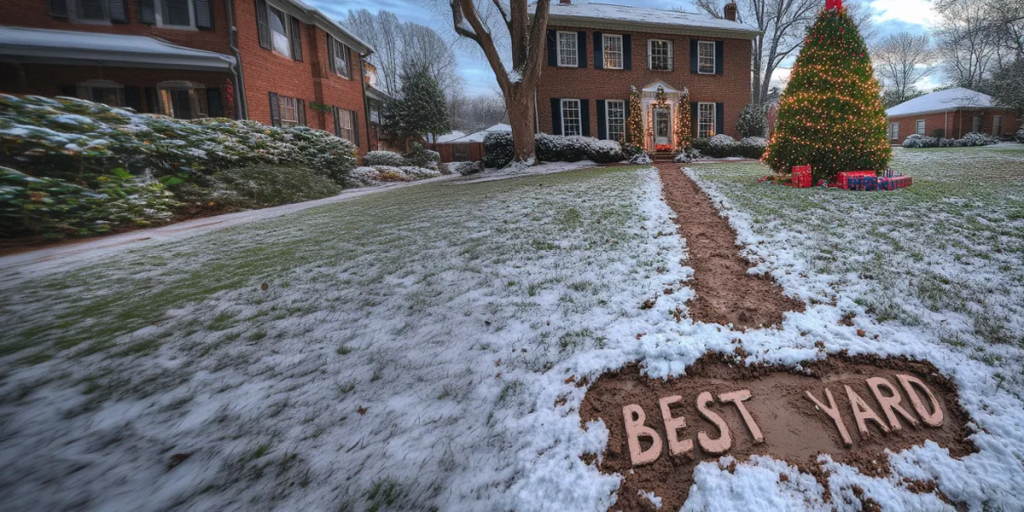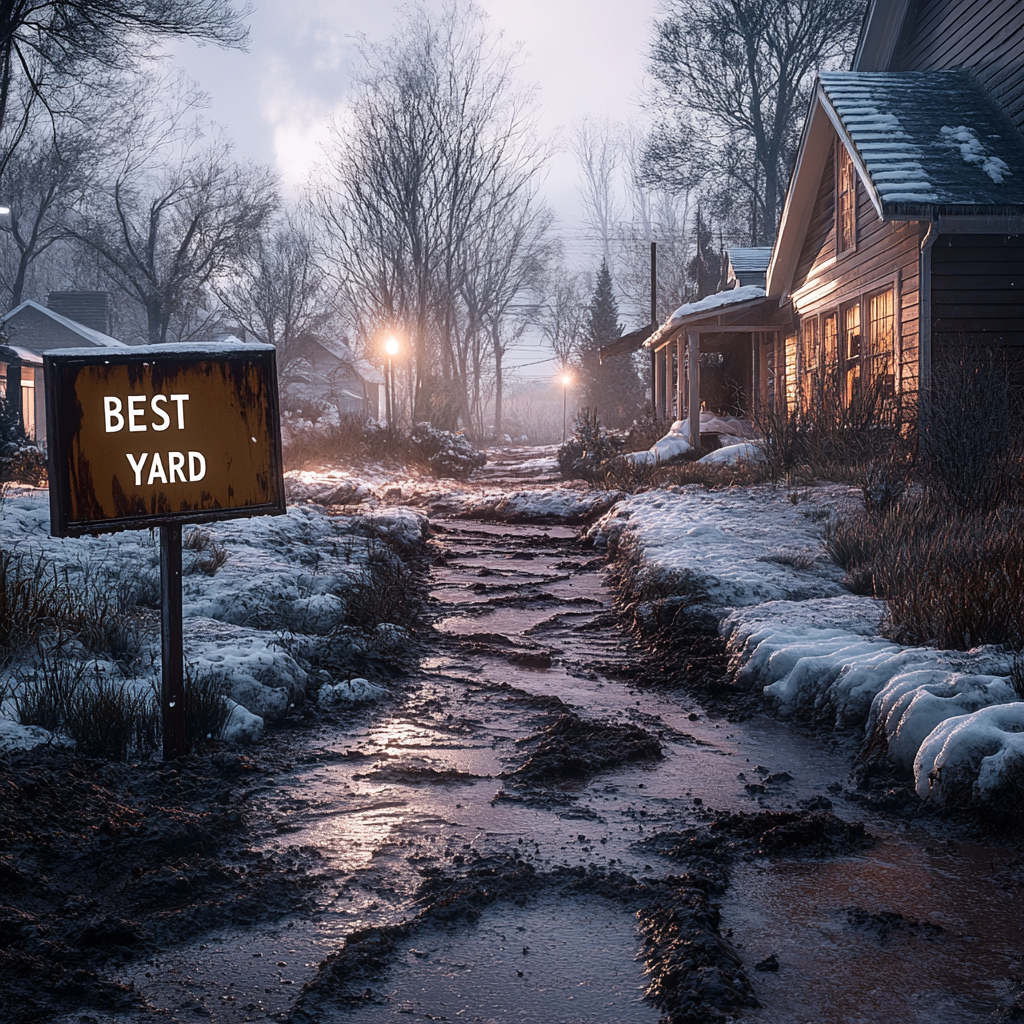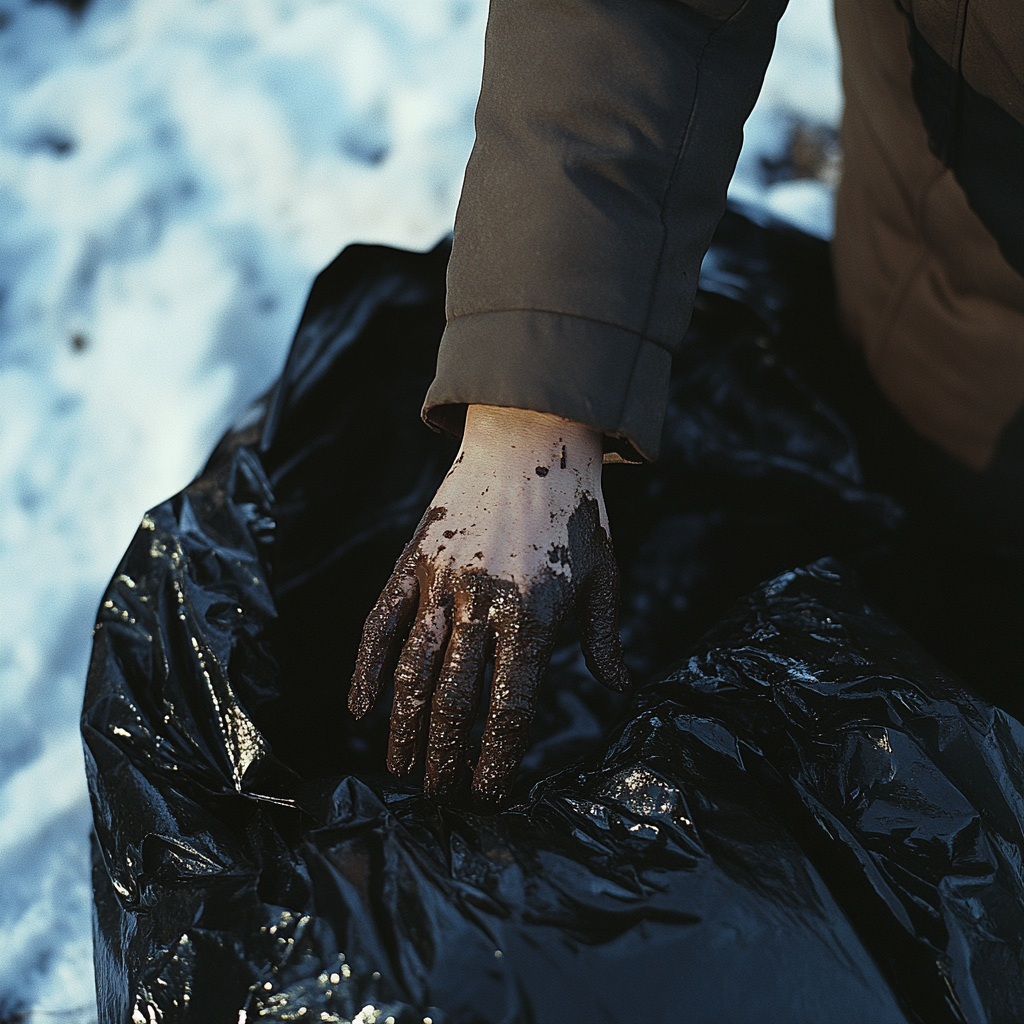The age-old debate about whether butter should be kept on the counter or in the fridge has divided households for generations. Some people swear by soft, spreadable butter at room temperature, while others insist that refrigeration is the only safe way to store dairy products. So, what’s the best approach?
This article explores the science, health risks, and cultural practices behind butter storage to help you make the most informed decision for your household.
Understanding Butter Composition: Why It Matters for Storage

Butter isn’t like other dairy products. Its high fat content (around 80%) makes it more resistant to spoilage compared to milk or cream. It also contains some water and milk solids, which can contribute to mold growth if exposed to air and contaminants for too long.
Because of its low water activity, butter is less prone to bacterial growth, but that doesn’t mean it’s invincible. The way you store butter can impact its flavor, texture, and shelf life—so it’s important to get it right.
Historical Practices: How People Stored Butter Before Refrigeration
Long before refrigerators existed, people needed ways to keep butter fresh. In many homes, butter was stored at room temperature using butter bells or ceramic crocks. These containers created an airtight seal by using water, preventing oxygen exposure and delaying spoilage.
Other traditional storage methods included:
- Salting butter to extend shelf life.
- Burying butter in cool cellars to keep it from melting.
- Wrapping it in cloth soaked in vinegar to prevent bacterial growth.
Video : Tips to Store the Butter
These methods worked in their time, but modern refrigeration has changed the way we think about butter storage.
The Science Behind Butter Storage: Does It Really Spoil at Room Temperature?
From a scientific standpoint, butter is more stable than other dairy products because of its high fat and low moisture content. This makes it difficult for bacteria to thrive. However, butter can still oxidize, turn rancid, or develop mold if exposed to air, heat, or contaminants for too long.
Here’s how different factors affect butter storage:
- Temperature: If your kitchen is warm (above 70°F or 21°C), butter will soften too much, making it more prone to oxidation and spoilage.
- Exposure to air: Oxygen causes butter to go rancid faster, which is why sealed storage is crucial.
- Salted vs. unsalted butter: Salted butter has a longer shelf life at room temperature because salt acts as a natural preservative. Unsalted butter, on the other hand, should be refrigerated for safety.
Health Risks of Leaving Butter Out: Is It Safe?
Many people assume that because butter is a dairy product, it must be refrigerated. The reality? The risk of foodborne illness from butter is low, but it’s not zero.
Here’s what can happen when butter sits out too long:
- Mold growth: Over time, exposure to air and moisture can cause mold to develop on butter, especially if it’s unsalted.
- Rancidity: Even if butter doesn’t spoil in a harmful way, it can turn rancid due to oxidation, leading to an off taste and smell.
- Cross-contamination: If butter is handled with dirty utensils, bacteria from other foods can transfer onto it.
The USDA states that butter is safe at room temperature for up to two days, but beyond that, it’s best to store it in the refrigerator.

Benefits of Refrigerating Butter: Why It’s the Safer Choice
Keeping butter in the fridge may not be as convenient, but it offers several advantages:



The only downside? Hard butter is difficult to spread! But there’s a simple fix—take out a small portion and leave it on the counter for daily use while keeping the rest refrigerated.
Cultural & Regional Differences: Why Some People Keep Butter Out
In some countries, it’s common to leave butter at room temperature due to climate, tradition, and kitchen habits.
- Northern Europe: Many Scandinavian households use butter keepers to store butter at room temperature. The cool climate prevents it from spoiling quickly.
- France: The French often store unsalted butter in crocks but consume it quickly before it can spoil.
- Warmer regions: In hotter climates, refrigeration is a must, as butter melts and spoils faster.
So, whether you grew up with butter on the counter or in the fridge, your preference is likely shaped by tradition and environment.
Expert Opinions: What Do Food Safety Experts Say?

Most food safety experts agree that butter can be left out for short periods, but refrigeration is the safest choice for long-term storage.
- The FDA and USDA recommend refrigerating butter to preserve its quality and prevent contamination.
- Some chefs and bakers argue that keeping a small amount of butter at room temperature improves its texture and spreadability.
- Nutritionists advise storing unsalted butter in the fridge to reduce spoilage risk.
The verdict? A balanced approach is best—keep a small dish of butter out for daily use while storing the rest in the fridge.
Practical Tips for Storing Butter Safely
Want the best of both worlds? Follow these simple storage hacks:





Video : BUTTER, How long it will stay safe and tasty..?!!
Conclusion: Finding a Middle Ground in the Butter Storage Debate
So, should butter be stored on the counter or in the fridge? The answer depends on your climate, personal preference, and how quickly you use butter.
- If you love soft, spreadable butter, store a small amount in a covered dish on the counter.
- If you prioritize freshness and food safety, refrigeration is the better choice.
- If you want convenience and longevity, refrigerate most of your butter and use a butter crock for short-term storage.
At the end of the day, both methods can work—if done correctly. The key is to use proper storage techniques to keep your butter fresh, delicious, and safe to eat!
Meu vizinho arruinou meu quintal de Natal com um caminho de lama — Karma se vingou

Minha vizinha Sharon é o tipo de pessoa que compete por tudo, até mesmo por luzes de Natal. Quando seu ciúme mesquinho transformou meu quintal festivo em uma bagunça lamacenta, ela pensou que tinha vencido. Mas o carma a atingiu com uma reviravolta surpreendente e deu a ela os holofotes que ela merecia.
Você já teve aquela vizinha que parece prosperar em ser uma dor no traseiro? Para mim, é Sharon. Eu sou Evelyn — 35, mãe de dois gatos travessos e uma amante da alegria discreta do Natal. Eu moro em um bairro tranquilo, do tipo onde a maioria das pessoas acena quando passa.
Mas Sharon? Ela não acena apenas. Ela avalia seu quintal, suas decorações e provavelmente sua alma, pensando em maneiras de SUPERAR você.

Uma mulher decorando uma árvore de Natal | Fonte: Unsplash
Ano passado, a Homeowners’ Association (HOA) organizou um concurso de “Melhor Quintal de Natal”. Honestamente, eu nem estava planejando participar, mas Sharon tornou impossível ignorar.
“Ei, Evelyn!”, ela gritou em uma manhã de novembro, debruçando-se sobre a cerca que compartilhávamos. Suas unhas estavam perfeitamente cuidadas — vermelho-vivo, como se ela já tivesse decidido que era a Sra. Noel. “Você vai decorar este ano? Para o concurso?”
“Que concurso?”, perguntei, genuinamente sem noção.
O sorriso dela aumentou. “Ah, a HOA está organizando uma pequena competição divertida. O melhor quintal ganha uma placa ou algo assim. Imaginei que você gostaria de saber. Não que eu precise da competição.”

Uma mulher arrogante parada atrás de uma cerca | Fonte: Midjourney
Revirei os olhos. “Uau, Sharon. Humilde como sempre.”
“Humilde?”, ela zombou. “Prefiro o termo ‘profissionalmente festivo’. Alguém tem que definir o padrão do bairro.”
Ela riu como se já tivesse vencido. Eu apenas dei de ombros.
“Obrigado pelo aviso. Quase esqueci disso”, eu disse.
Sharon foi all-in. Dois dias depois, seu quintal parecia que o Natal tinha explodido. Papai Noel inflável? Confere. Rena? Confere. Milhares de luzes cintilantes sincronizadas com “Jingle Bell Rock”? Confere duas vezes. Ela até separou seções para sessões de fotos, cobrando cinco dólares por foto.

Um quintal exibindo uma decoração de Natal deslumbrante | Fonte: Midjourney
“Lembranças de Natal de cinco dólares!”, Sharon anunciou para qualquer um que estivesse por perto. “Oferta por tempo limitado!”
Eu? Coloquei algumas luzes de corda, pendurei uma velha guirlanda que tirei do sótão e coloquei algumas bengalas de doces. Não era muito, mas as crianças da vizinhança adoraram. Elas passavam, mastigando biscoitos ou puxando as mangas dos pais, apontando para o meu quintal como se fosse o pequeno esconderijo do Papai Noel.
Era tudo o que eu precisava.
A HOA anunciou o vencedor na festa de quarteirão anual. Eu nem estava prestando atenção até ouvir meu nome.
“E o Melhor Jardim de Natal vai para… EVELYN!”
Pisquei em descrença. Meu quintal? Sério?

Uma mulher atordoada | Fonte: Midjourney
Fui até lá para receber o certificado, me sentindo mais estranho do que orgulhoso. Pelo canto do olho, vi Sharon parada, rígida como um quebra-nozes. Seus lábios estavam tão franzidos que pensei que eles desapareceriam.
“Parabéns”, ela disse quando passei por ela no caminho de volta para meu assento. Seu tom? Doce como vinagre, com um tom que poderia coalhar gemada.
“Nossa”, ela continuou, seu sorriso tão forçado que parecia estar preso com arame de enfeite de Natal, “estou simplesmente EMOCIONADA por você. Quem imaginaria… que alguns bastões de doces e algumas luzes de corda poderiam superar minha exibição PROFISSIONAL?”
“Obrigado, Sharon”, respondi, mantendo a voz leve.
Ela se inclinou para mais perto, sua voz caindo para um sussurro. “Tenho certeza de que foi apenas um erro administrativo. Essas coisas acontecem.”

Uma mulher irritada | Fonte: Midjourney
O resto da noite, ela me evitou, mas eu a peguei olhando feio algumas vezes. Seu sorriso falso era tão rígido que eu estava meio que esperando que ele quebrasse como um pingente de gelo.
Sinceramente, pensei que seria o fim disso… apenas uma competição inofensiva. Eu deveria saber melhor. Especialmente com Sharon.
Na manhã de Natal, arrumei as malas no carro e fui para a casa da minha mãe. Ela não estava muito bem de saúde, então eu queria passar o feriado com ela. Quando voltei dois dias depois, meu queixo caiu no chão.
Havia um caminho lamacento que ia da calçada direto para a minha porta da frente. Meu quintal — meu quintal limpo e festivo — era uma zona de desastre. A lama cobria tudo. E bem ao lado, em letras gigantes, estava a mensagem:
“MELHOR JARDIM.”

Um quintal com uma trilha lamacenta | Fonte: Midjourney
Eu olhei para ele, a raiva borbulhando dentro de mim. Quem mais poderia ter feito isso? Era a Sharon clássica — exagerada, infantil e simplesmente maldosa.
“Eu deveria confrontá-la”, murmurei, então rapidamente voltei atrás. “Não, não. Confrontar Sharon é como entrar voluntariamente na caverna do Grinch. Com um capacho de boas-vindas. E talvez uma cesta de frutas.”
Peguei uma pá e sacos de lixo, meu monólogo interno correndo solto. “Confronto? Pfft. Ela provavelmente teria câmeras de vigilância. Ou pior… testemunhas preparadas com depoimentos juramentados sobre meu ‘comportamento agressivo no quintal’.”

Uma mulher segurando uma pá em uma trilha lamacenta | Fonte: Midjourney
Murmurando baixinho, comecei a recolher a lama mole. “Mesquinha, imatura… Como ela tem tempo para isso? Senhorita ‘Eu sincronizo minhas luzes de Natal com números musicais da Broadway’.”
Eu parei, minha pá no meio da escavação. “Se eu for lá, ela vai se fazer de vítima. Ela vai tomar chá. Provavelmente com tema de Natal. Com pequenos porta-copos de bonecos de gengibre.”
Outra bola de lama. “Não. Não vale a pena. Ela transformaria isso em um drama de Natal de três atos onde eu sou o vilão.”
Conforme eu continuava a escavar, minha frustração aumentava. “Melhor quintal, hein? Mais como melhor escultura de lama. Parabéns, Sharon. Você realmente se SUPEROU dessa vez.”

Uma mulher frustrada com o rosto coberto de lama | Fonte: Midjourney
Peguei outro saco de lixo, ainda resmungando. E quando comecei a recolher mais lama, o karma decidiu fazer uma aparição surpresa.
“Evelyn! ESPERE!”
Olhei para cima e vi Sharon correndo em minha direção, com o rosto pálido como a neve.
“O que você quer?”, perguntei, segurando minha pá no ar. “Veio oferecer mais conselhos sobre paisagismo?”
“Por favor, não jogue a lama fora!”, ela implorou, sua voz estridente e desesperada. Ela parecia um cervo pego pelos faróis — se esse cervo estivesse usando botas de inverno de grife e tivesse uma manicure.

Uma mulher ansiosa gritando | Fonte: Midjourney
Pisquei. “Por que eu guardaria lama? Você acha que estou construindo um castelo de lama aqui? Planejando alguma escultura de Natal de vanguarda?”
Ela hesitou, torcendo as mãos. “Eu, uh… eu perdi algo. Meu anel de noivado. Acho que ele pode ter caído quando eu estava… uh…”
“Quando você estava escrevendo ‘MELHOR JARDIM’ no meu gramado?” terminei para ela, levantando uma sobrancelha. “Que conveniente.”
O rosto dela ficou vermelho como uma beterraba. “Olha, só… não jogue fora, ok? Eu mesma limpo!”
Cruzei os braços, sorrindo. A dinâmica de poder havia mudado de repente, e eu estava vivendo cada segundo. “Ah, não, Sharon. Você queria fazer bagunça? Tudo bem. Mas estou terminando a limpeza. Se seu anel estiver aqui, fique à vontade para procurá-lo. Na lixeira!”

Uma mulher furiosa franzindo a testa | Fonte: Midjourney
Seus olhos se arregalaram em puro horror. “Evelyn, por favor —”
“É melhor começar”, interrompi, jogando outra pá de lama no saco de lixo. “Ouvi dizer que lama é ótima para esfoliação. Considere isso seu tratamento de spa de Natal.”
Sharon parecia presa, como um rato perfeitamente penteado em uma ratoeira muito cara.
Uma hora depois que terminei, ela estava com os cotovelos atolados no lixo, vasculhando lama com suas botas de grife.
“Você já encontrou?”, perguntei, parada na varanda com uma xícara de café, curtindo o show como se fosse meu desfile pessoal de fim de ano.
“Não. Ajudando”, ela retrucou, limpando lama do rosto. Seu cabelo perfeitamente iluminado agora parecia uma escultura de lama que deu errado.

Uma mulher vasculhando um saco de lixo | Fonte: Midjourney
Os vizinhos começaram a sair de suas casas, fingindo “dar uma volta” ou “checar a correspondência”. Logo, metade do quarteirão estava observando Sharon vasculhar sacos de lixo como um guaxinim… um guaxinim muito bem vestido e cada vez mais frustrado.
Um cara do outro lado da rua sussurrou para sua esposa: “Você viu as botas dela? Devem ter pelo menos US$ 400 estragados ali.”
“Eu ficaria mais preocupado com o casaco”, respondeu sua esposa, sufocando uma risada. “Essas marcas de grife não gritam exatamente ‘amigas da lama’.”
Sharon ouviu e lançou-lhes um olhar capaz de congelar o trenó do Papai Noel em pleno voo.

Uma mulher irritada franzindo a testa | Fonte: Midjourney
Uma hora depois, ela soltou um grito triunfante que poderia ter quebrado vidro. Ela levantou o anel como se tivesse ganhado uma medalha olímpica pela Escavação de Lama Mais Dramática.
“Achei!” ela gritou.
Bati palmas lentamente, sorrindo como o Gato de Cheshire. “Parabéns. Agora sobre o resto da lama…”
Ela me lançou um olhar mortal tão intenso que poderia derreter o Polo Norte. Ela enfiou o anel no bolso e voltou pisando duro para casa. O som de suas botas chapinhando era música para meus ouvidos.

Close-up shot de uma mulher segurando um anel de diamante | Fonte: Midjourney
Na manhã seguinte, saí com uma xícara de café, esperando ver o Papai Noel inflável de Sharon acenando alegremente como sempre. Mas seu quintal estava… VAZIO. Nenhuma luzinha piscando, nenhuma música, nem mesmo uma bengala de doce perdida. Apenas um gramado assustador e despojado que parecia estar se preparando para um degelo em meados de janeiro.
“Uau”, murmurou Greg, meu vizinho de duas portas abaixo, enquanto ele passava arrastando os pés com seu cachorro. “Sharon finalmente desistiu?”
“Parece que sim”, eu disse, fingindo estudar meus arbustos enquanto continha um sorriso.
A vizinhança falou sobre isso o dia todo. Aparentemente, Sharon tinha empacotado tudo ao raiar do dia. O boato era que ela estava mortificada demais para encarar alguém depois de sua performance de luta na lama no meu quintal. Uma vizinha jurou que ouviu Sharon resmungando algo sobre como “os holofotes não valiam a pena”.

Um quintal vazio em um dia de neve | Fonte: Midjourney
“É mais como se o farol de lama não valesse a pena”, murmurei para mim mesmo.
À tarde, as pessoas estavam passeando pelo meu quintal para elogiar minhas decorações novamente. “Tão simples, tão doce”, a Sra. Hargrove arrulhou. “Você realmente mereceu essa vitória.”
“Amuleto de Natal sem esforço”, respondi com uma piscadela. “Às vezes, menos é mais.”
Eu apenas sorri e agradeci, meu coração fazendo uma pequena dança da vitória. Não porque eu tinha vencido, mas porque eu sabia que Sharon provavelmente estava dentro de casa, espiando pelas persianas, fervendo de vergonha.

Uma mulher alegre sorrindo | Fonte: Midjourney
Naquela noite, enquanto eu regava minhas poinsétias, Sharon saiu para verificar sua caixa de correio. Ela olhou na minha direção e, por um segundo, pensei que ela acenaria ou diria algo civilizado.
Em vez disso, ela se virou e voltou para dentro, batendo a porta atrás de si com tanta força que pensei que as guirlandas de Natal iriam tremer.
Eu ri, balançando a cabeça. “Talvez no ano que vem, Sharon. Talvez no ano que vem!”

Uma mulher furiosa parada na porta | Fonte: Midjourney
Aqui vai outra história : o senhorio da mãe solteira Suzana roubou a árvore de Natal que ela havia comprado para os filhos e roubou o coração do feriado deles. Em vez de chorar, ela ensinou ao homem mau uma lição inesquecível.
Este trabalho é inspirado em eventos e pessoas reais, mas foi ficcionalizado para fins criativos. Nomes, personagens e detalhes foram alterados para proteger a privacidade e melhorar a narrativa. Qualquer semelhança com pessoas reais, vivas ou mortas, ou eventos reais é mera coincidência e não intencional do autor.
O autor e a editora não fazem nenhuma reivindicação quanto à precisão dos eventos ou à representação dos personagens e não são responsáveis por nenhuma interpretação errônea. Esta história é fornecida “como está”, e quaisquer opiniões expressas são as dos personagens e não refletem as opiniões do autor ou da editora.



Leave a Reply